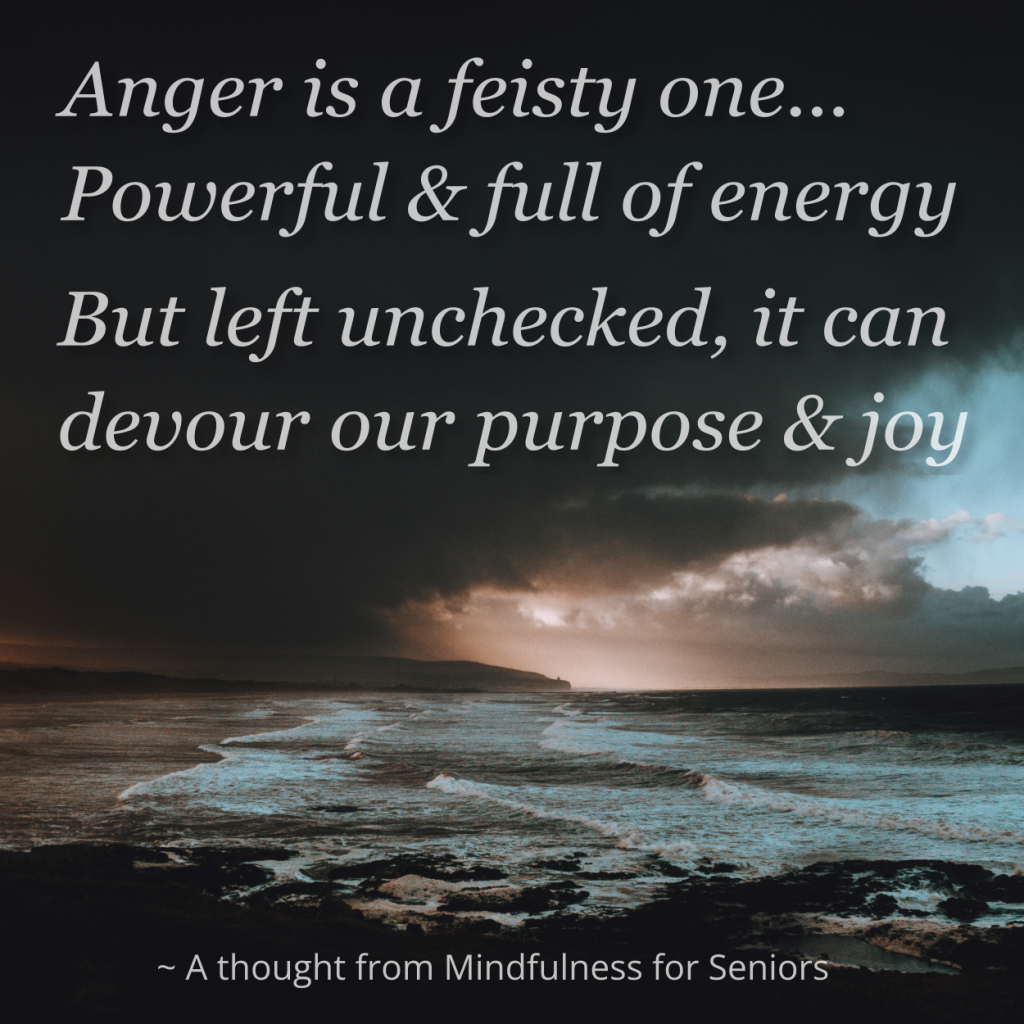Anger, Mindfulness, and Ikigai: Taming the Feisty One
How Anger Can Muddy Our Wellspring of Ikigai ~
While anger, mindfulness and ikigai (pronounced ‘ee-key-guy’) are not often found in the same sentence, this odd framing is a way to show how both mindfulness and our ikigai are two potent life-tools that can help us to keep our anger from getting out of control. First, let’s zoom out a bit and take a broader look at anger.
As we all know and have likely experienced, anger can be a feisty one. A potent, untamed emotion that can feel like a jolt of pure energy. It’s powerful, often distressing, and difficult to manage—much like a wild, unpredictable force that’s full of raw energy.
This raw energy, however, is a double-edged sword. Left unchecked, it becomes a destructive force, consuming everything in its path. We’ve all seen it or felt it: that moment when anger takes over, and we say or do things we immediately regret.

Messing With Our Compass: How Anger Muddies Our Ikigai
This is where the real danger lies, especially for our Ikigai. As we have been writing about lately, Ikigai isn’t some distant goal or a perfect intersection of a few bullet points and economic ideal outcome. It’s a living, breathing wellspring of inspiration and joy, a quiet inner song that guides our most authentic expression. It is the very source of our “sweet adventures unknown,” often spoken in a subtle, hushed internal voice, revealed through a gentle and mindful lens. (See our last blog post on this topic >)
Anger, Mindfulness, and Ikigai: The Rage and the Antidote
But anger is loud. It doesn’t just shout—it rages, creating a deafening storm that drowns out the subtle voice of our Ikigai. When we allow this “feisty one” to take over, its noise and accompanying “should’s and should-not’s” corrupt the very source of our joy. Instead of a spontaneous wellspring, our actions become reactive and bitter, driven by resentment rather than our deepest loves.
Think of it like this: your Ikigai is a crystal-clear spring, constantly bubbling with fresh, joyful waters. Unchecked anger is a turbulent mudslide that clouds that clarity. It doesn’t block the flow so much as it obscures the wisdom of our source. It makes it nearly impossible to “Lean in… And listen closely…” to what our Ikigai is quietly voicing.
These muddied waters often leave us feeling empty and disconnected, alienated us from our natural inclinations and the very people, ideas, things and behaviors that bring us happiness. The anger, when unchecked, replaces our small quiet guide, and can lead to a life lived in bitterness, resentment, and even rage. We lose sight of our highest goals and sense of self, and life purpose and passions, because the wellspring from which they flow has been trammelled with the sharp hoofs of anger.
Anger, Mindfulness, and Ikigai: Quieting the Storm
So, how do we protect our Ikigai from this obscuring force? The key is not to eliminate anger, but to understand it, and learn how to meet it, and then handle it.
We all likely understand when I say, “Anger can be a catalyst for change when channeled productively“—usually this comes about when a boundary has been crossed or a perceived wrong has been committed. But without a grounded understanding of self-awareness and a gentle framework of attentiveness, even a well-intentioned upset and anger can turn into a raging torrent, leaving confusion, upset, hurt, and disarray in its wake.
By understanding how we can “choose to pause,” to breathe, and to lean into a mindful approach, instead of riding the waves of upset and anger-fueled upheaval, we can begin to tame this powerful emotion. We can protect the integrity of our inner wellspring, ensuring that our purpose and joy remain the guiding lights or our Ikigai instead of becoming derailed by the fleeting fury of the feisty one.


